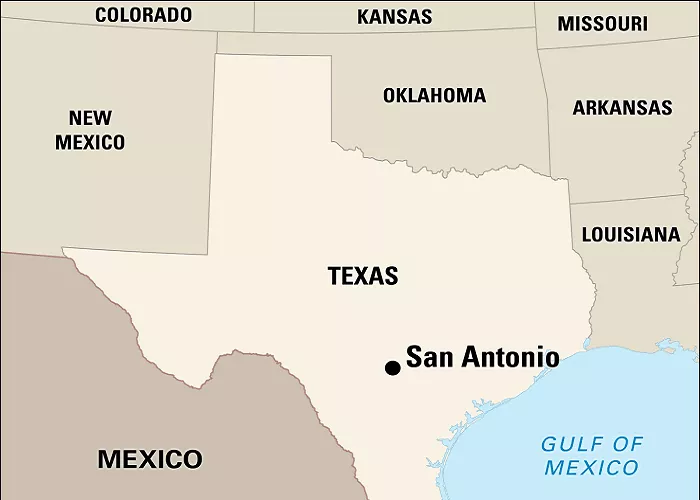San Antonio, often affectionately called “San Antone,” is a city steeped in history and culture, located in the south-central region of Texas. Understanding its geographical position offers valuable insights into its development and significance.
San Antonio stands as the second-most populous city in Texas and the seventh in the United States. Founded in 1718, it has transformed from a Spanish colonial outpost into a thriving urban center. Its strategic location has been instrumental in shaping its history, economy, and cultural identity.
Where Is San Antonio Located in Texas?
San Antonio is in the south-central part of Texas. It is about:
- 80 miles (130 km) southwest of Austin (the state capital)
- 190 miles (310 km) west of Houston (the largest city in Texas)
- 150 miles (240 km) northeast of the U.S.-Mexico border
If you look at a Texas map, San Antonio sits in Bexar County and is the second-largest city in Texas (after Houston) and the seventh-largest in the U.S.
San Antonio’s Coordinates (Exact Location on the Map)
- Latitude: 29.4241° N
- Longitude: 98.4936° W
This places San Antonio in the Central Time Zone (CST) and gives it a warm, subtropical climate.
Regional Context
San Antonio serves as the county seat of Bexar County and is a pivotal city in the Greater San Antonio metropolitan area, which ranks as the third-largest in Texas and the 24th-largest in the United States. This expansive region encompasses a diverse array of communities, industries, and cultural influences, all interconnected with San Antonio at its core.
Historical Significance of Location
The city’s establishment along the San Antonio River has been crucial since its founding. The river not only provided essential water resources but also served as a vital transportation route. This strategic advantage facilitated trade and communication, fostering economic development and cultural exchange. The river’s path through the city has been integral to its urban planning and growth.
Economic Importance
San Antonio’s proximity to the U.S.-Mexico border enhances its role in international trade. Major highways such as Interstate 10 and Interstate 35 converge in the city, linking it to national and international markets. This accessibility supports a robust economy, with key sectors including military, healthcare, tourism, and manufacturing. The city’s economic landscape is further enriched by its diverse industries and strategic location.
Cultural Influence
The city’s location has fostered a unique blend of cultures, prominently featuring Hispanic influences. This cultural richness is evident in its architecture, festivals, cuisine, and traditions, making San Antonio a vibrant and diverse urban center. The confluence of various cultures has shaped the city’s identity, making it a microcosm of broader American cultural dynamics.
Conclusion
San Antonio’s geographical position in south-central Texas has been instrumental in shaping its history, economy, and cultural identity. Its strategic location continues to influence its role as a dynamic and influential city within the state and the nation. Understanding this location provides a lens through which to appreciate the city’s unique character and ongoing development.

